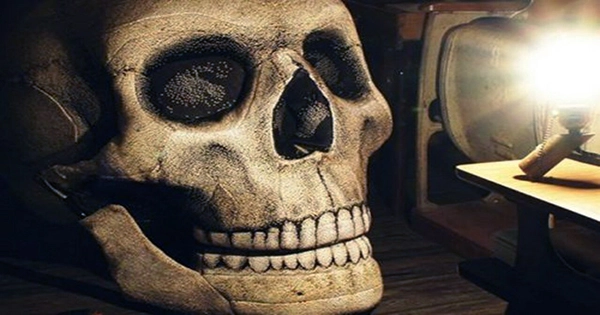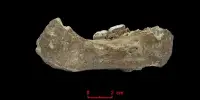Consider spending a day kayaking along the Minnesota River. It’s a beautiful summer day, the birds are singing, the insects are chirping, everything is perfect… Until you come upon a partial skull, that is. This is what happened to two kayakers last summer on a drought-stricken stretch of the river near Minneapolis, some 180 kilometers (110 miles) west. The skull was discovered to be 8,000 years old, and it is now being turned over to Native American officials, who are most likely the rightful owners of the bones.
Scott Hable, the sheriff of Renville County, got the skull and shared it with a medical examiner and subsequently the FBI, believing it was connected to a missing person investigation or homicide. Although these specialists were unable to identify the individual, a forensic anthropologist used carbon dating to conclude that the skull belonged to a young man who lived between 5500 and 6000 BCE.
There was a depression in the skull that may have been caused by “blunt force trauma,” but it had healed and was not the cause of death. The reason of death is yet unclear. This skull might have been buried along the water’s edge and has since eroded, or it could have been drifting in the river for thousands of years. Kathleen Blue, an anthropology professor at the University of Minnesota, told the New York Times that the individual was unmistakably an ancestor of one of the last tribes in the area. “There were probably not that many humans moving about Minnesota 8,000 years ago,” she added, “since the glaciers had just receded a few thousand years before that.”
They presumably ate freshwater mussels, plants, deer, turtles, and fish, according to Blue, but “we don’t know much about it at that time.” Because it is uncommon for Native American tribes to allow their ancestors’ bones to undergo archaeological examinations or to be displayed at all, and it is illegal in Minnesota to willfully disturb historic burial grounds, including 12,000 known Indigenous burial mounds that time period is relatively unknown.
As a result, when the sheriff announced the discovery and the bones with the caption “a tiny bit of history,” many Native American organizations and the Minnesota Indian Affairs Council slammed the office, claiming that publishing images of ancestral remains is disrespectful to their culture. “Seeing Native American ancestors being displayed and regarded as a piece of history is distressing for many Native Americans as, for decades, Native American tombs were plundered, damaged, and destroyed,” said Dylan Goetsch, cultural response specialist with the Minnesota Indian Affairs Council.
The post has been decommissioned, and the relics will be handed over to Upper Sioux Community tribe leaders. “We had no clue, but we were informed that the Facebook post was disrespectful to one or more persons, and we have subsequently removed it.” “We didn’t intend for it to be insulting in any way,” Hable told MPR. The drought that hit Minnesota in 2021, which was the worst in 10 to 30 years in certain areas, uncovered the skull. Drought has uncovered remains before; only last year, human corpses were discovered on Nevada’s emptying Lake Mead, with more predicted as a result of climate change.
















